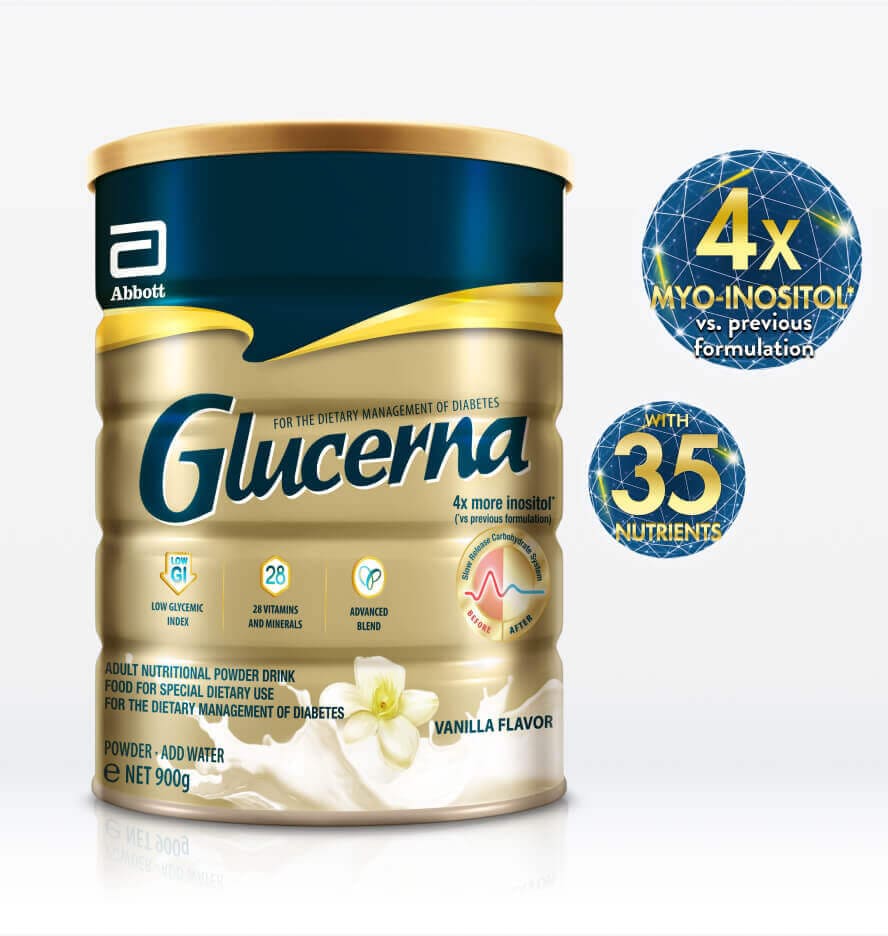Glucerna Vanilla Flavor
- Title
- Glucerna® Vanilla Flavor
- Detail Page Path
Benefits of exercise for people with diabetes
Exercise has many benefits for all individuals. For those with diabetes, exercise is crucial for managing the condition and living well. For a person with diabetes, exercise helps
• Insulin to work better (which improves diabetes management)
• Maintain a healthy weight
• Lower blood pressure
• Reduce the risk of heart disease
• Reduce stress
How much exercise do I need?
It is generally recommended you do about 30 minutes of exercise each day for good health.1 You can do this in one 30-minute session or, if easier, break it up into three 10-minute sessions throughout the day.1
45–60 minutes of exercise each day is recommended for people who need to lose weight.
Getting started with exercise
For those with diabetes, it is recommended that you speak with your healthcare professional before starting a new exercise program or making changes to an existing program.1 This is particularly important if you have any diabetes-related complications, such as retinopathy or nephropathy.1 Your healthcare professional will be able to advise you on the types of exercises that are more suitable for you and which types of exercises to avoid.
The best approach is to take it slowly when starting an exercise program. This is particularly helpful if you have an inactive lifestyle. It is beneficial to increase your general fitness to increase your daily physical activity (e.g., taking the stairs instead of the lift, getting up to change the TV channel instead of using the remote control, doing housework, and gardening).1 Avoid watching too much TV or sitting at the computer for a long time.
If you feel unwell or have ketones present in your blood or urine, do not participate in strenuous physical activity.1 An exercise plan, created together with an accredited exercise physiologist, can be helpful. Your GP will be able to refer you to a local service.
What types of exercises can I do?
Anything that gets your body moving counts. Here are some suggestions of exercises for you to discuss with your healthcare professional:
• Walking
• Swimming
• Cycling/exercise bike
• Dancing
• Gardening
• Golfing
• Weight training
• Tai Chi
• Water aerobics
Please discuss which of these may be most suitable for you with your healthcare professional.
Top tips to increase your physical activity at work and home
While exercise is important for people with diabetes, physical activity is just as important. But aren’t they the same thing?
The terms are often used interchangeably. However, physical activity refers to all movements that increase energy use, whereas exercise is planned, structured physical activity,2 such as going for a jog.
When you’re busy, planned exercise often gets put on the back burner, but that doesn’t mean you should stop moving altogether. By finding ways to incorporate incidental physical activity into your day, whether at work or home, you can help improve glycemic control and overall health2. Every bit counts!
Here are some ways to get more movement into your day with just a few minor changes.
Stand up and move around for 1-2 minutes every half an hour. Use an alarm or calendar reminder on your phone to prompt you.
Do some stretches as soon as you wake up, even while lying in bed. Start incorporating stretches during your breaks or even while sitting at your desk at work.
Perform bodyweight exercises during short breaks, such as calf raises, knee to elbow, and standing wall press-ups. 5-10 minutes is all you need.
Take the stairs instead of the lift whenever you get the chance.
If you drive to work, park further away than usual and walk the extra distance.
Take public transport to work – it may encourage you to be more active.
Schedule walking meetings at work.
Do more household chores, more frequently.
We know that exercise benefits everyone, including those with diabetes. So it’s worth making an effort to incorporate exercise into our daily life.
Tips on safe physical activity.
Regular checking and recording of your blood glucose level are essential in reinforcing healthy lifestyle choices. CGM eliminates the hurdles of traditional monitoring requiring routine fingersticks or fingerstick calibrations
Glucerna® is the number 1 selling diabetes nutritional supplement in the world*. It contains 35 nutrients, slow-release carbohydrates and 4x more inositol vs previous formulation, that delivers a dual action for tight blood sugar control.
* Euromonitor International Limited; total global retail sales in 2023 for diabetic diet enhancer drinks that are not marketed as a meal replacement product. Euromonitor and Abbott calculation based in part on custom research conducted between October and November 2023 and Euromonitor Passport Consumer Health 2023 based on 2022 data.

You are about to exit for another Abbott country or region specific website.
Please be aware that the website you have requested is intended for the residents of a particular country or region, as noted on that site. As a result, the site may contain information on pharmaceuticals, medical devices and other products or uses of those products that are not approved in other countries or regions.
The website you have requested also may not be optimized for your specific screen size.
Do you wish to continue and exit this website?
Stay Connected